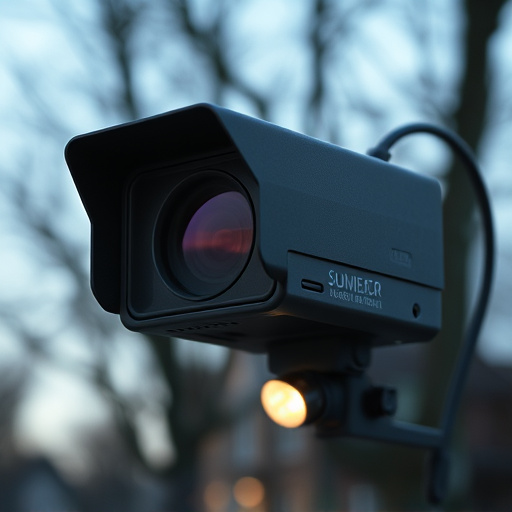Spy Camera Artificial Intelligence (AI) Integration leverages advanced algorithms and computer vision to detect hidden cameras on smartphones. Trained on vast datasets, AI models identify subtle patterns like lens shapes, reflections, or distortions in real-time video feeds, enhancing privacy protection against covert surveillance in public and private spaces. This innovative technology becomes more accurate over time, offering a powerful tool against privacy breaches.
Uncover the hidden threat of spy cameras with our guide to lens detection using mobile phones. In an era where privacy is paramount, understanding how to identify these clandestine devices is crucial. We explore the role of Artificial Intelligence (AI) in detecting spy camera lenses and its integration for enhanced security. From phone-based identification methods to AI’s ability to revolutionize camera security, this article offers a comprehensive approach to tackling the growing concern of spy camera artificial intelligence integration.
- Understanding Spy Camera Lens Detection
- Role of Artificial Intelligence in Detection
- Integrating AI for Enhanced Camera Security
- Phone-Based Spy Camera Identification Methods
Understanding Spy Camera Lens Detection
Spy camera lens detection using artificial intelligence (AI) integration has become an increasingly important tool in today’s digital era. This technology leverages advanced algorithms and computer vision techniques to identify and alert users about potentially hidden cameras, enhancing privacy protection. By analyzing visual data from a smartphone’s camera, AI models can detect subtle patterns and anomalies that might indicate the presence of spy cameras. These models are trained on vast datasets containing known camera types and their signature visual characteristics, enabling them to recognize even miniature or disguised lenses.
The process involves several steps: image capture, feature extraction, pattern recognition, and notification. Once a user captures an image, AI algorithms scrutinize it for specific features commonly associated with spy cameras, such as tiny lens openings or unusual shapes. If detected, the app can notify the user, providing them with crucial information to take appropriate actions. This technology is especially useful in public spaces, workplaces, and private residences where hidden surveillance devices could compromise personal privacy.
Role of Artificial Intelligence in Detection
The role of Artificial Intelligence (AI) in spy camera lens detection is becoming increasingly significant as technology advances. AI integration enables smartphones to detect and identify hidden cameras with remarkable accuracy. By leveraging machine learning algorithms, these systems can analyze visual data in real-time, spotting telltale signs of covert surveillance equipment. This includes recognizing specific patterns, shapes, and anomalies that might be overlooked by human eyes, such as the distinctive shape of a camera lens or unusual reflections from glass surfaces.
AI-powered detection methods continuously learn and adapt, becoming more effective over time. They can be trained on vast datasets containing known camera types and configurations, allowing them to recognize even sophisticated or novel spy cameras. This proactive approach ensures that users remain vigilant against potential privacy breaches, making it a crucial tool in the digital age where hidden cameras pose a growing threat.
Integrating AI for Enhanced Camera Security
Integrating AI into spy camera systems takes camera security to the next level, enhancing detection capabilities and providing advanced surveillance solutions. Artificial Intelligence algorithms can analyze video feeds in real-time, learning patterns and identifying anomalies that might indicate the presence of hidden lenses. By leveraging machine learning, these systems become increasingly accurate in spotting small or disguised cameras, ensuring no covert recording goes unnoticed.
This technology employs computer vision techniques to scan for visual cues often associated with spy cameras, such as irregular shapes, unusual reflections, or subtle disturbances in the frame. With AI’s ability to adapt and learn from new data, it can continuously refine its detection methods, making it a powerful tool in the ongoing battle against privacy invasions and information theft.
Phone-Based Spy Camera Identification Methods
Modern smartphone technology offers innovative solutions for detecting hidden spy cameras, leveraging advanced Phone-Based Spy Camera Identification Methods. One prominent approach involves integrating Spy Camera Artificial Intelligence (AI) Integration into mobile apps. These AI algorithms can analyze live video feeds or still images to identify unique patterns and signatures often associated with miniature camera lenses. By training models on vast datasets of known spy camera components, these apps become increasingly adept at spotting subtle anomalies that might otherwise go unnoticed by the human eye.
Furthermore, phone cameras themselves can act as powerful tools in this detection process. Through sophisticated image processing techniques, such as edge detection and texture analysis, users can scrutinize pixel patterns and distortions that may indicate the presence of a hidden lens. This method leverages the very sensors designed for regular photography against the covert devices attempting to capture private moments, making it an effective countermeasure against spy cameras in both public and personal spaces.
Spy camera lens detection using phone technologies has become crucial in enhancing privacy and security. The integration of Artificial Intelligence (AI) in spy camera identification methods is a game-changer, enabling more accurate and efficient detection. By leveraging AI for enhanced camera security, we can ensure that our personal spaces remain free from unwanted surveillance. Phone-based spy camera identification techniques, backed by AI, offer a practical solution to navigate this modern challenge, making it simpler to identify and mitigate potential threats.
